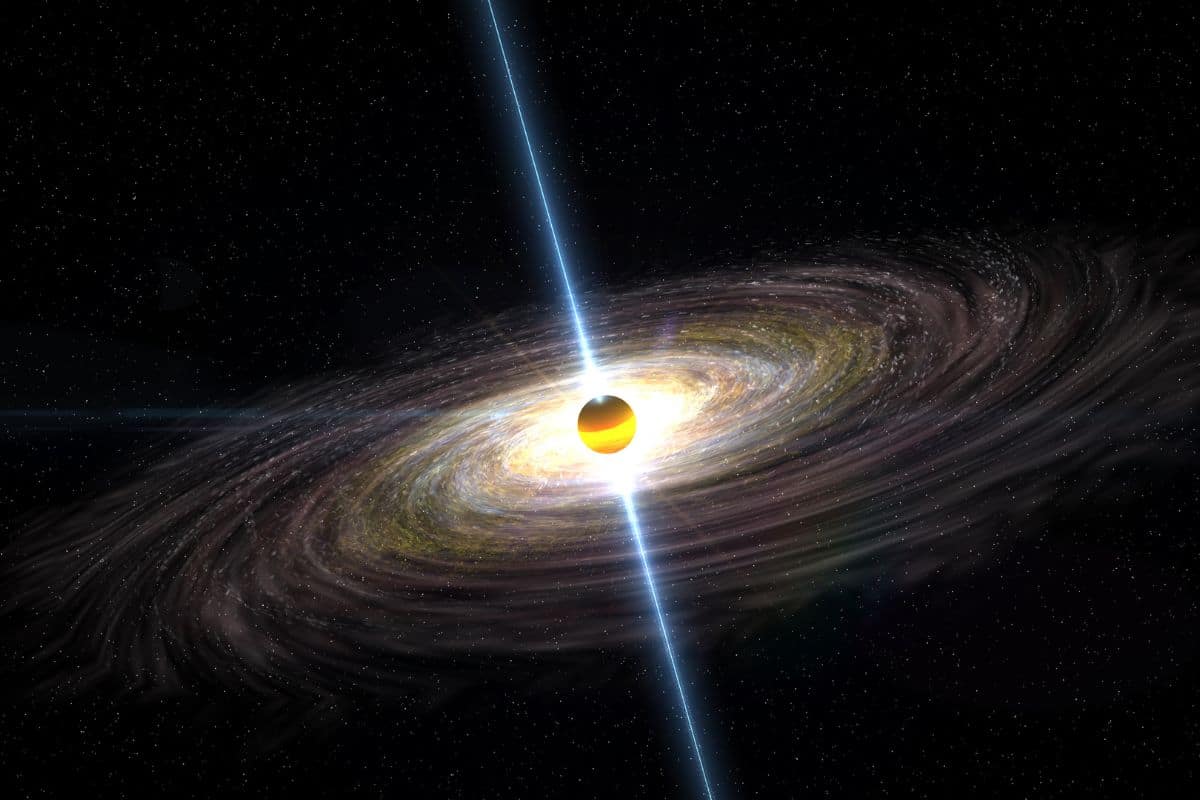
A supermassive black hole from the early cosmos is devouring material at an astonishing pace, challenging established astrophysical theories. Found at the core of the galaxy LID-568, this black hole is observable just 1.5 billion years post-Big Bang, growing at over 40 times the Eddington limit—a theoretical ceiling that determines the maximum rate at which black holes can accrete material.
Understanding the Eddington Limit: How This Black Hole Is Surpassing It
The Eddington limit plays a vital role in the study of black hole accretion. Instead of directly falling into the black hole, matter forms a rotating accretion disk around the event horizon as it nears the black hole.
As the black hole feeds, radiation pressure increases to a point where it can counterbalance further material intake, thereby restricting the growth rate of the black hole.
However, the black hole in LID-568 is breaking through this threshold, consuming material at such a remarkable speed that it emits significantly more energy than anticipated for its mass. Astrophysicists have verified this unusual behavior with the help of the JWST’s NIRSpec instrument and the Chandra X-ray Observatory.
The Enigma of Rapidly Growing Supermassive Black Holes
A primary mystery in astrophysics is how supermassive black holes—massive entities weighing millions to billions of times more than the Sun—managed to form so quickly in the primordial universe. Traditional theories maintain that black holes develop gradually by accumulating matter at or below the Eddington limit.
Nevertheless, findings like LID-568 indicate that some black holes may experience dramatic feeding episodes, known as super-Eddington accretion.
This revelation supports the theory that several early black holes attained rapid growth by consuming substantial amounts of material during brief and intense periods. It also reinforces the notion that the universe’s first supermassive black holes likely did not emerge from conventional collapsing stars.
A Remarkable and Fortunate Observation
The opportunity to witness black holes engaged in such extreme feeding behavior is a rare occurrence. Hyewon Suh, the lead researcher at Gemini Observatory and NSF’s NOIRLab, and her team were privileged to capture LID-568 at an opportune moment.
Considering the brevity of super-Eddington accretion phases, most black holes that experienced such explosive growth in the past are no longer in similar states. Consequently, LID-568 is now a prime candidate for further studies.
Does This Finding Challenge Existing Theories of Black Hole Evolution?
This discovery implies that super-Eddington accretion might be a crucial factor in the formation of the universe’s earliest and largest black holes. If black holes can undergo short but intense feeding episodes, it becomes significantly easier to account for their rapid early growth.
Upcoming JWST observations and advanced telescopes could reveal additional black holes undergoing similar intense growth phases, enabling scientists to enhance models of how black holes and galaxies evolved in the early universe.









